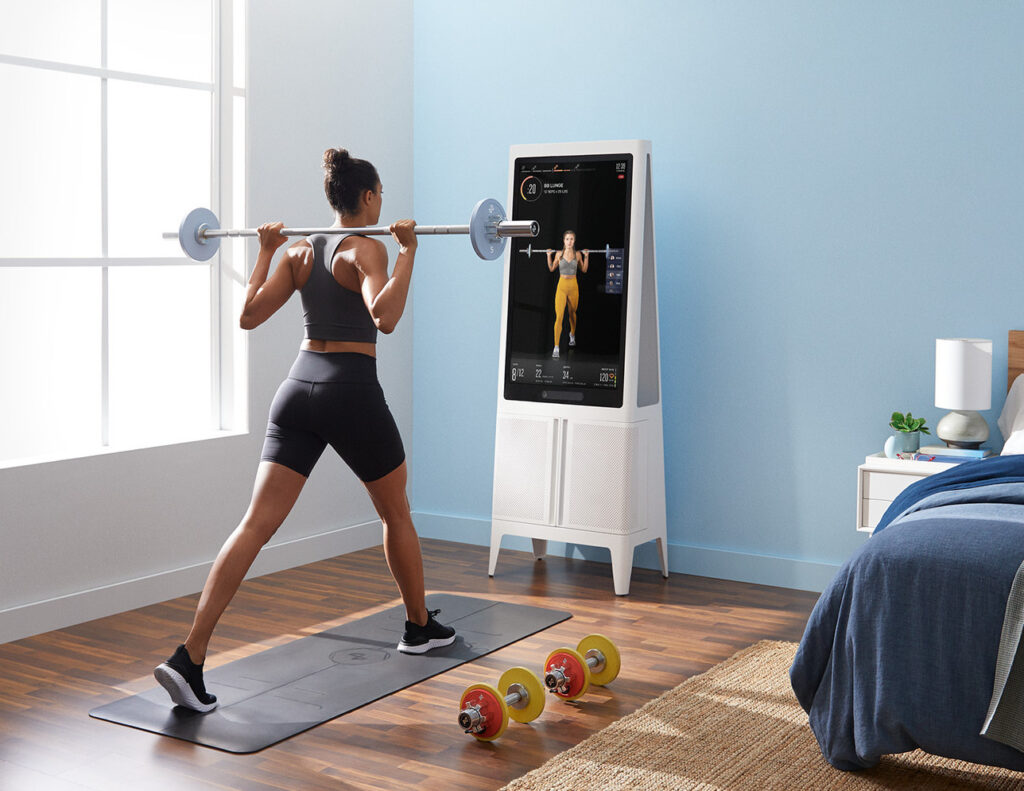It’s safe to say that most people are ready for things to get back to their own pre-pandemic version of normal, but if trends continue, some things may never be the same.
First, will we ever look at personal health the same way ever again? The ongoing COVID-19 pandemic has altered the way that we view and treat our bodies, and the result has been a rapid increase in the popularity of health and wellness products.
Second, Harvard Business Review estimates that 15% of people now working from home aren’t likely going back to an office, at least not full-time. That represents a significant portion of businesses and employees who have found ways to adapt and thrive. By not having to commute (at least not farther than a room or hallway), individuals have found more time to focus on health while also enjoying the comforts and conveniences of staying home.
COVID Accelerated Four Health and Wellness Trends
If there’s one thing that these next four trends have in common, it’s that they were all slowly taking shape before the pandemic started. At-home fitness classes, nutritional supplements, athleisure wear, and electric bikes aren’t entirely new. They all however have enjoyed a strong uptick in popularity over the past year.
COVID accelerated these trends by changing the way people live, work, and work out, and it’s easy to see which sectors are poised to thrive for the foreseeable future.
1. At-Home Fitness
In 2013, Peloton shocked the world when they launched a $2,500 stationary bike that came with an additional $40 monthly subscription. Even with the examples of predecessors like Boflex and AB Roller, it was hard to see how most consumers would be willing to shell out that kind of cash outside of a gym.
When the pandemic forced gyms and fitness studios to close, companies like Peloton and Tempo received a significant boost and their momentum hasn’t slowed down. Tempo has perhaps experienced the most dramatic increase in users, perhaps drawn in by the fact that they’re the only real strength training platform in the sector (for now).
It’s hard to completely predict how workout trends will play out in a post-pandemic world. Some people will be thrilled to return to the social setting of the gym, or to just leave out of the house. But as at-home fitness becomes increasingly social, it’s a safe bet that a significant chunk of this $22.4B industry will be fed by many more happy homebodies.
2. “Better for You” Supplements and Sports Nutrition
It used to be that the only people who cared about sports nutrition were athletes, and the only people who drank protein shakes were bodybuilders. Today, the dietary supplements market is on track to reach $272.4B by 2028, adding to the evidence that times have changed.
Our ongoing global health crisis forced people all over the world to re-think their physical and mental health. Consumers from all walks of life are seeking new products, routines and communities to help improve their daily habits.
As a result, the sports nutrition sector is growing in all directions, bringing innovative products to new markets and consumers. For MTN OPS, this presented an opportunity to expand both within and beyond its roots in the hunting community.
The Utah-based health and wellness company provides a wide portfolio of products designed to help its customers reach their health goals, whatever those might be. Its signature product, Ignite, is a zero-sugar alternative that consumers substitute for traditional energy drinks. In 2020, MTN OPS doubled down on offering a community alongside those products. It expanded its coaching platform and held a virtual 5K race event that attracted nearly 20,000 participants. By offering this community alongside its products, MTN OPS drives increased loyalty, with over 70% of revenue coming from returning customers.
Another business in the supplement space that has been booming is Ritual, the direct-to-consumer multivitamin subscription company.
For years, the growing $40B US vitamin and supplement market has taken advantage of the consumer’s lack of education and has gotten away with adding harmful colorants as well as hidden and misleading ingredients to many of the top brands. Additionally, many traditional multivitamins contain well over 30 ingredients, most of which aren’t necessary since we get enough through our diets.
Founder and CEO Kat Schneider started the company in 2015 while pregnant with her first child after she couldn’t find a prenatal vitamin that she trusted when it came to ingredients and manufacturing processes. Ritual is based on the belief that better health begins with better ingredients that can be traced to its source.
Like Kat, today’s consumers are more aware than ever what ingredients they are putting into their bodies, especially when it comes to vitamins – something you take every day. Ritual has created clean, science-backed, vegan-certified multivitamins for women, men, kids, and more. Customers can track the journey of every single nutrient from its source to how it’s designed to work in your body.
Kat recently told Forbes that business has boomed during Covid-19, with Ritual shipping one million bottles over the first half of 2020, with one new bottle shipped every 16 seconds.
3. Athleisure Wear – Like Pajamas, But More Productive
When Lululemon started selling yoga pants, there were more than a few people who questioned the $98 price tag. But by positioning themselves as an aspirational brand and sticking hard to that script, they were able to become a multi-billion-dollar company, complete with fitness classes, local events, and online mindfulness tools.
Athleisure brands like Lululemon have been so successful, that powerhouse companies like Nike and Adidas have been struggling to keep pace.
It’s not surprising then that the safer-at-home needs of a global pandemic would accelerate the athleisure trend. This is a space we’re very familiar with as investors in Vuori, the popular activewear brand that saw a more than 200% increase in sales in 2020 and recently hired a former Lululemon executive to lead its retail efforts.
4. E-Bikes: Transforming Transportation and Capturing Outdoor Fitness Enthusiasts
Traffic, parking costs, unstable fuel prices, and an increased awareness of greenhouse gas (GHG) emissions, have made e-bikes the attractive alternative for consumers around the globe. Even before the pandemic, the positive trend towards e-bike sharing had investors re-thinking this market.
With the unique challenges of a post-COVID market, e-bikes are in the midst of the category “moment.” Consumers and communities alike have spent the last year re-thinking mobility from the ground up, and micro-mobility options like scooters and bikes quickly found supportive municipalities and happy commuters. As a result, cities are embracing bike-friendly transportation plans like never before.
As it stands, the electric bike market is pretty sizable at ~$10B. This number is expected to increase to $46B by 2026.
What’s Next for Personal Health and Wellness Businesses
There’s no getting around the fact that the post-pandemic world is going to be a little different, and some familiar consumer spending trends are going to return. But the health and wellness sector was afloat with positive tailwinds even before the pandemic, and the unique circumstances of a global health crisis are likely to keep this trend going for years to come.
In the coming years, we expect to see an even greater surge of health and wellness startups. Each one will have their own unique recipe for “redefining fitness” or “revolutionizing our well-being”. But if the pandemic has taught us anything, brands who are able to pivot quickly and differentiate effectively will survive and thrive in a post-COVID world.



